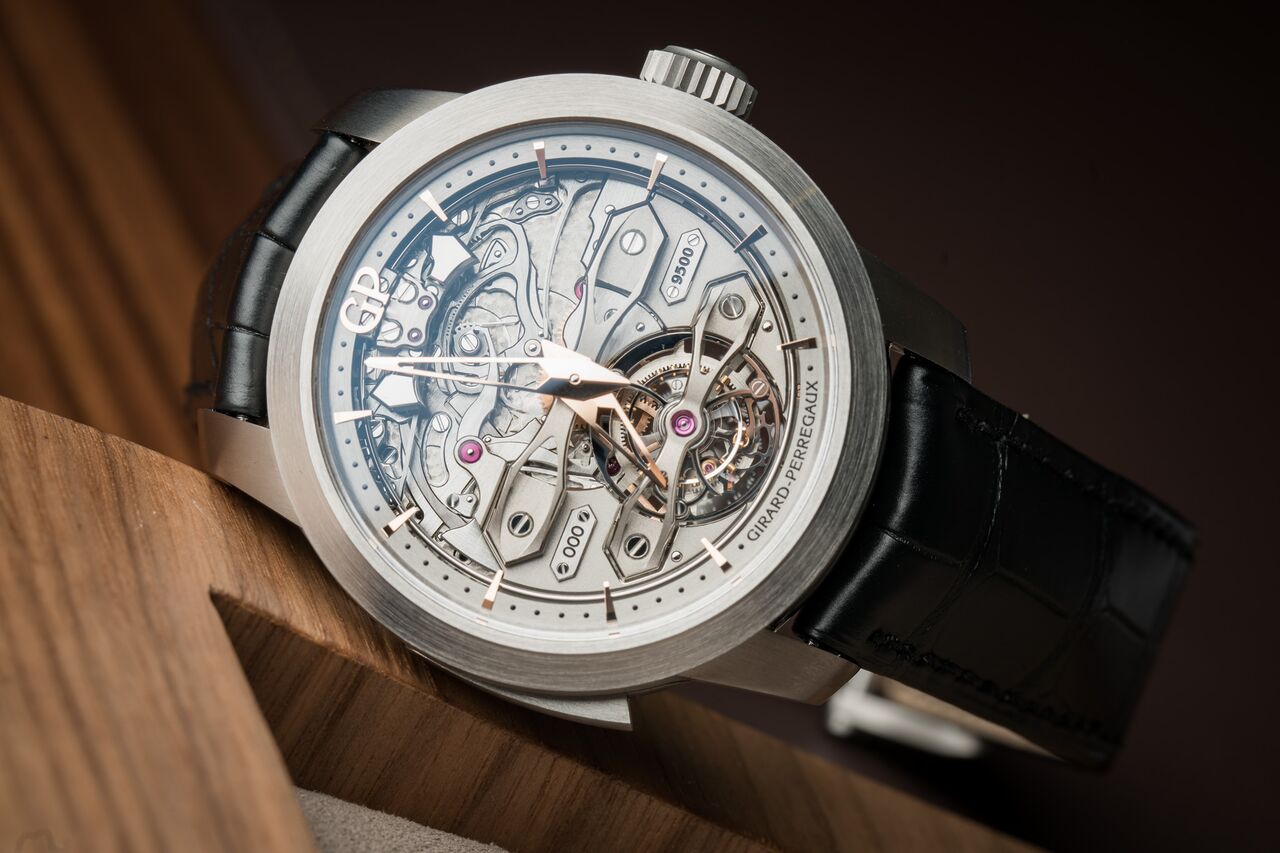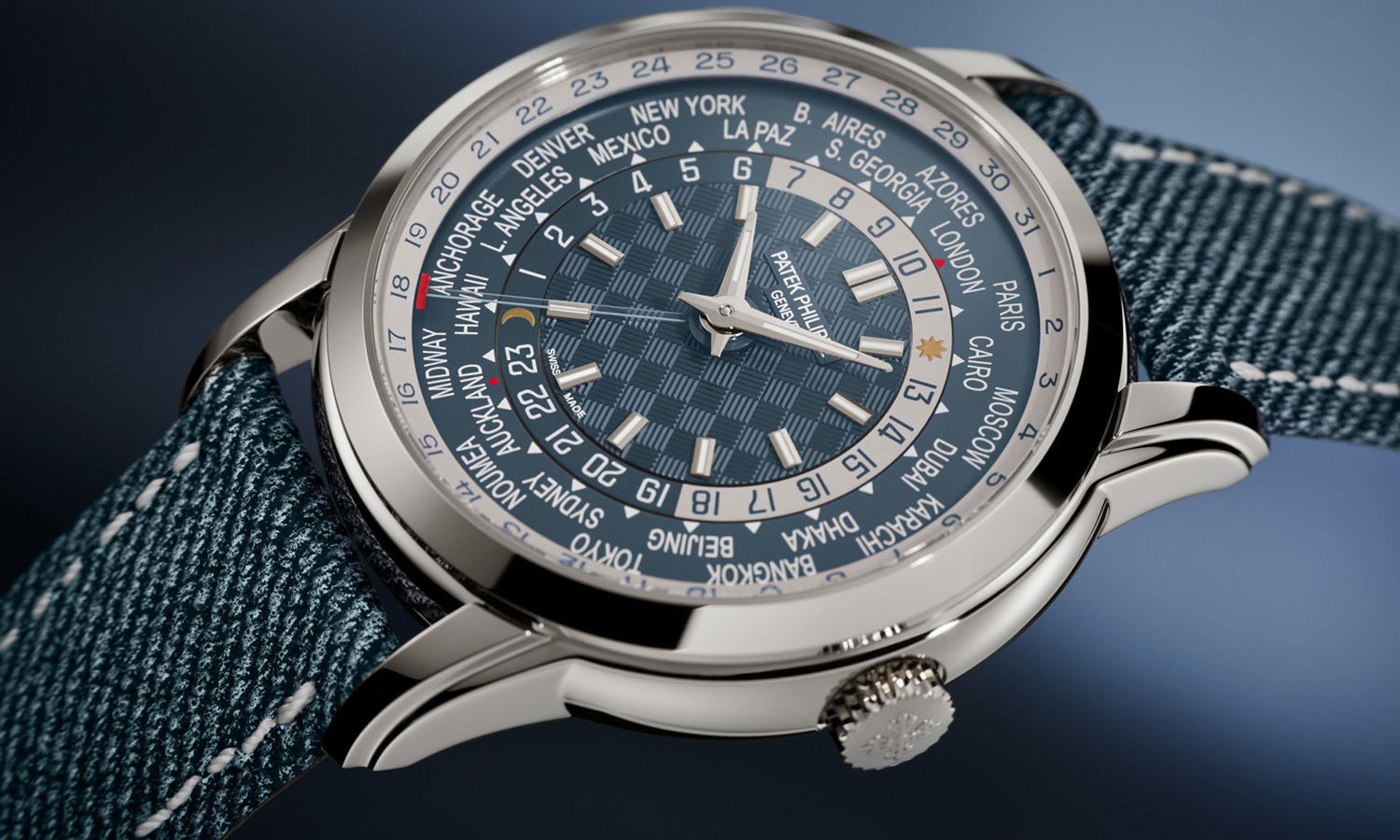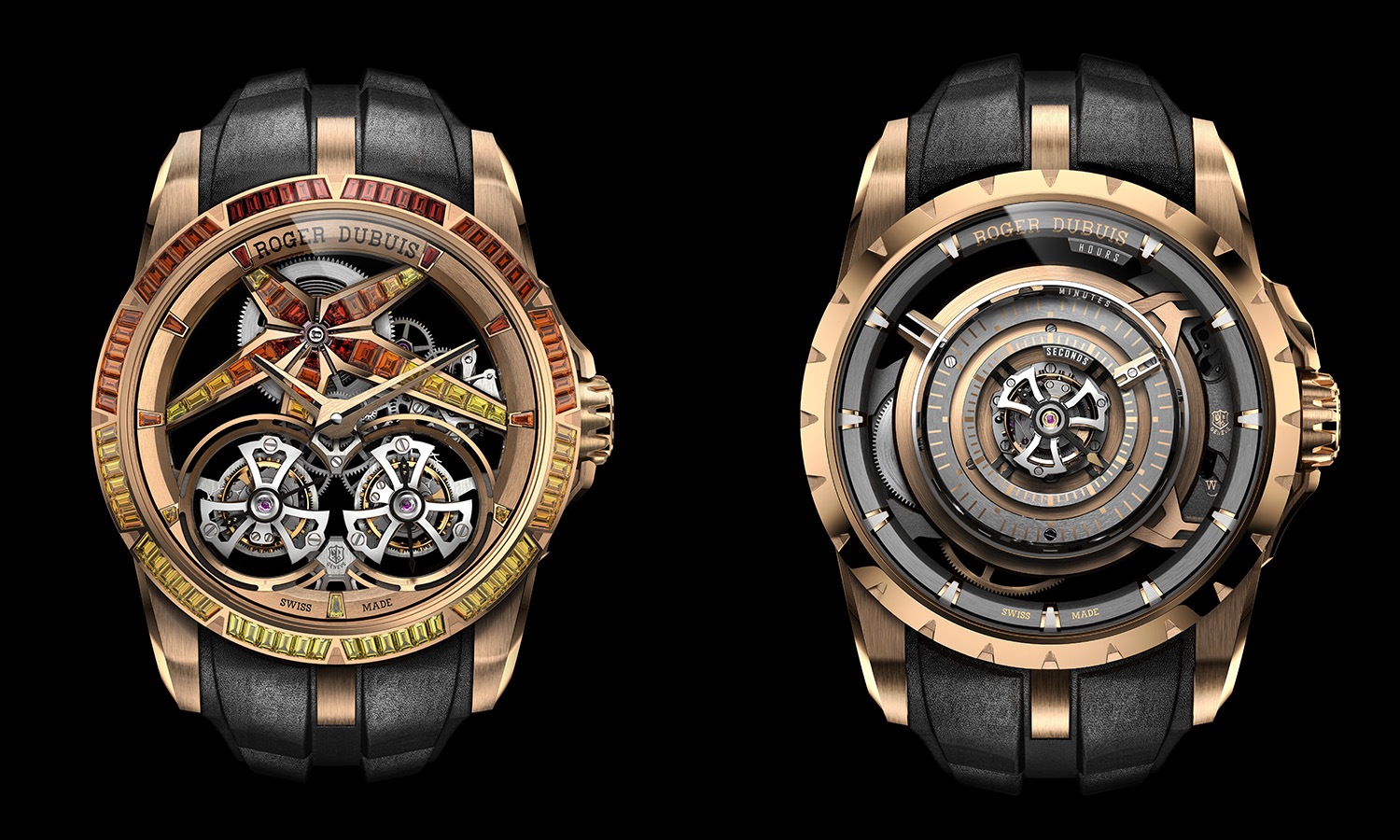
Haute Complication: Girard-Perregaux Minute Repeater Tourbillon With Bridges
Some watches put everything on the table, and when you are a minute repeater tourbillon that is quite a feat! Girard-Perregaux did just that and added their iconic bridges to it, for good measure.
The result is an imposing watch, not so much because of its 45mm case, but more so because the top part gives you an unobstructed view of the striking mechanism of the minute repeater. Below dominated the tourbillon, which is held by one of the iconic bridges.
It might come as a surprise, but the case of this watch is not crafted from a precious metal. Instead, Girard-Perregaux opted for titanium. Not only does it makes the watch lighter, and more comfortable to wear, but it also makes the minute repeater sound much louder than its gold siblings. It also means that the watch has a more sportive look to it. For that Girard Perregaux also wisely departed from golden bridges in favor of the more contemporary bridge design of the Neo-Tourbillon. Gold hands and hour markers give the watch a slight classical touch, but that is more a reference to the historic nature of these complications.
By presenting all the complications at the front of the watch, the back is naturally less of an attraction. That doesn’t mean that there is nothing to see, as it shows the back of the tourbillon, with that iconic bridge as well as the governor, the device that regulates the strike speed of the minute repeated. Girard-Perregaux opted for very beautiful, yet understated sandblasted back of the movement. The power reserve is rather generous, being 60 hours.
With the Minute Repeater Tourbillon With Bridges Girard-Perregaux shows how a classical grand complication can migrate to the modern world without being instantly avant-garde, opting for sensible evolution instead of a more radical revolution.
 SIGN UP
SIGN UP














